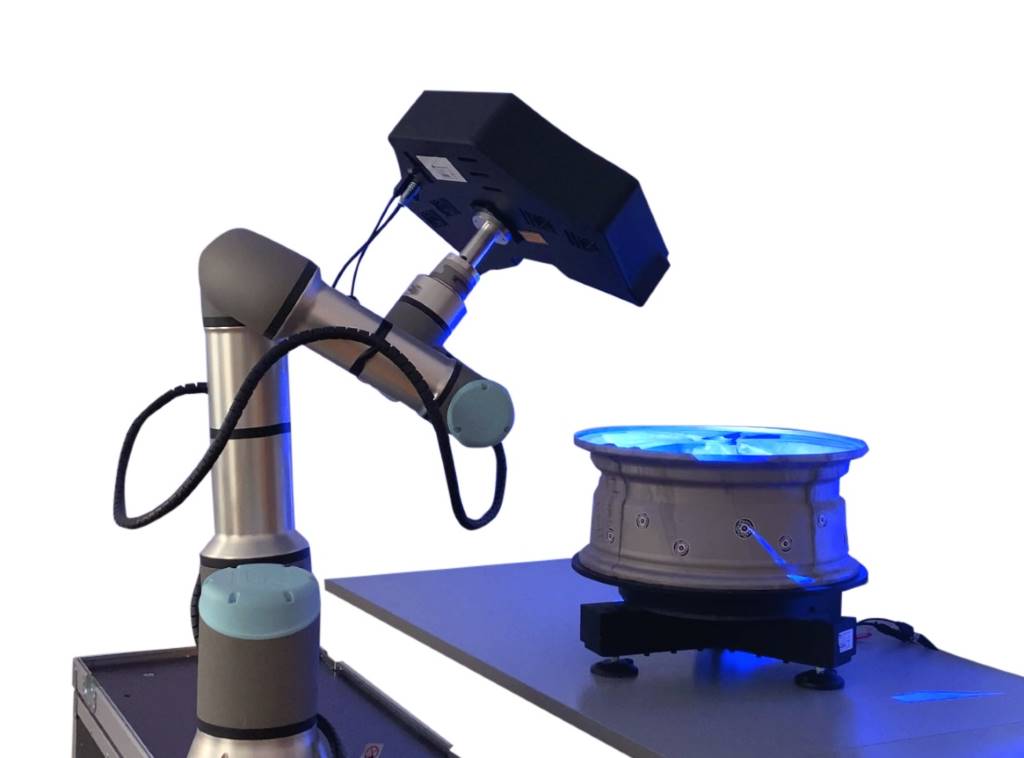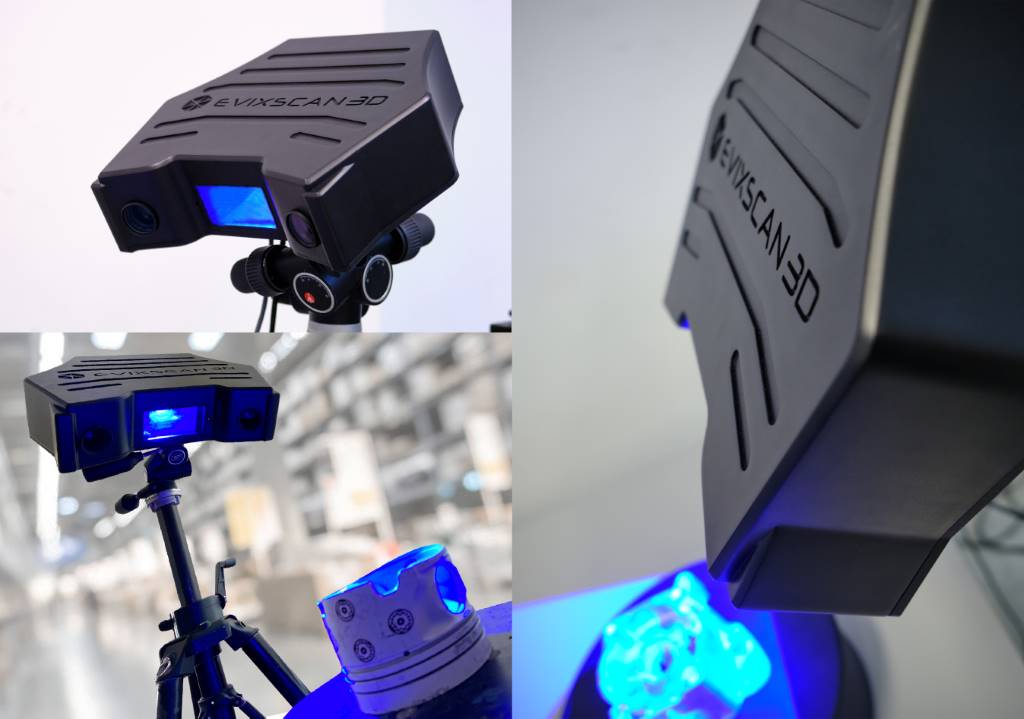To scan or not to scan?

In this article for PES, Brian Kyte from optical inspection specialist Optimax discusses whether 3D scanners could ever replace CMMs?
In various industries, optical 3D scanners and Coordinate Measuring Machines (CMMs) are indispensable tools for dimensional measurement and inspection, each with its distinct strengths and limitations.
The question of whether a 3D scanner can replace a CMM hinges on specific application requirements and the necessary precision. If the accuracy aligns with the application, and there's a clear line of sight to the features being inspected, a scanner might, in some cases, replace a CMM, providing faster results with a higher point density.
Consideration of two critical factors is essential: size and accuracy. For instance, the Evixscan wide range 65 3D scanner (available from Optimax) can cover an area up to 2m with an accuracy of 0.03mm.
In contrast, the Evixscan FinePrecision can measure an object up to 120mm with an accuracy of 0.006mm. Notably, with scanners, larger areas may imply reduced accuracy. Conversely, a CMM offers a significantly larger measurement range and maintains high accuracy throughout, accepting there is still length dependency associated with precision.

Accuracy, speed and precision
CMMs are renowned for their high accuracy, making them suitable for applications with tight tolerances across a wide range of component sizes. They employ physical touch probes for measuring points on an object's surface. However, every measurement relies on a single point of contact from the probe, which can result in single-point errors.
Optical 3D scanners can also deliver excellent accuracy, dependent on the measured area and precision requirements. However, a 3D scanner records many thousands of data points, contingent on resolution and size. For example, the Evixscan FinePrecision collects 1,200 points per square millimetre, providing rich 3D data for measurement, comparison, and CAD data.
Optical 3D scanners, celebrated for their swiftness, significantly outpace CMMs in capturing extensive volumes of data. This advantage is particularly evident when dealing with complex shapes and intricate surfaces. Leveraging laser or structured light, they rapidly capture a vast quantity of data points in a non-contact manner, creating a highly detailed 3D model. This process is remarkably quick, capable of capturing thousands or even millions of data points per second, offering a comprehensive representation of the object's geometry within a matter of seconds or minutes.
In contrast, CMMs use a point-by-point contact measurement approach, where a physical probe or stylus makes direct contact with the object's surface, measuring one point at a time. This process is inherently slower, as the probe needs to move sequentially to various locations on the object's surface, meticulously recording each data point. The time required to scan a large volume of data can be significantly longer compared to optical 3D scanners.
What’s on the surface?
Optical 3D scanners showcase exceptional proficiency in accurately capturing the intricate 3D geometry of complex and freeform surfaces, rendering them invaluable for a diverse range of practical applications. These include reverse engineering, stringent quality control assessments of components with intricate shapes, and digitising objects that require precise dimensional documentation.
In quality control scenarios, where the precision of measurements is paramount, optical 3D scanners offer a distinct advantage. They excel at inspecting parts with intricate, non-standard geometries, ensuring that manufacturing processes meet stringent standards.
While CMMs have their strengths and have long been the cornerstone of metrology, they are better suited for measuring prismatic or well-defined geometries. Their contact-based methodology excels at capturing precise measurements on flat surfaces and standard geometric shapes, making them indispensable in industries where strict dimensional tolerances are essential.

Portable flexibility
Optical 3D scanners not only offer enhanced speed but also remarkable versatility, as they are typically more portable and adaptable to a wider array of environments and applications. Their compact and lightweight designs empower users to move them effortlessly between locations. Unlike a CMM, they do not require a special climate-controlled environment to produce accurate data and typically have a small footprint.
On the other hand, traditional CMMs have historically been synonymous with large, stationary installations. These robust and highly precise machines often occupy a significant footprint in controlled environments like manufacturing facilities or quality control labs.
Conclusion
While CMMs are robust and precise instruments, their initial setup costs, considering the purchase price, customised locations, and maintenance requirements, are higher than those of optical 3D scanners. Additionally, the need for controlled environments may incur additional expenses, making them more suitable for industries where the investment in precision is a primary consideration.
The decision between an optical 3D scanner and a CMM depends on the specific needs of your application. CMMs, with their well-established role in metrology, excel in controlled environments, especially when dealing with well-defined geometries and surfaces. Their reliability in capturing precise measurements on standard shapes and flat surfaces makes them indispensable for industries with stringent dimensional tolerances.
While optical 3D scanners offer enhanced speed, portability, and versatility, they may not fully replace CMMs in scenarios requiring the highest level of precision over large areas. The choice between the two tools ultimately hinges on factors such as the complexity of the surfaces, the need for rapid data acquisition, and the level of precision demanded by the application.
With advancements in technology, both optical 3D scanners and CMMs continue to play crucial roles in fulfilling diverse measurement and inspection requirements, but with resolutions of scanners now down to .006mm, the future holds intriguing possibilities.
Optimax
https://optimaxonline.com















